|
with Kim Rodgers Molecules and Marshmallows!  This week in Chemistry class we learned about atoms as building blocks for molecules. Atoms must follow rules in order to make a given molecule. For example, hydrogen atoms can only hook to one other atom, while oxygen can’t hook to more than two atoms. We looked at the Lego blocks that the students regularly play with before class and during lunch. We discussed how there are a finite number of other blocks that can attach to any one block. The number of bumps the piece has limits the number of other blocks that can attach. Atoms are the same way. Using toothpicks and two sizes of marshmallows, the students made as many creations as they could. After a while of creating they drew pictures of their favorite ones. We then placed a rule on our creations. Each large marshmallow can only have three toothpicks coming off of it. The students could still create many different structures. We then moved to two toothpicks per large marshmallow, finally moving to only one toothpick. Afterwards we discussed how each time we put a constriction on how the structures could be assembled, our possibilities for creating were constricted as well. This drove the point home that each atom having a certain amount of bonds allows certain molecules to be formed. There is order instead of chaos. We followed up this activity by observing how molecules move in cold and hot water, as opposed to room temperature water, which we observed last week. The students helped put together our experiment making sure the variables were all equal to make the experiment true. Ahead of time I had put ice in one bowl of water and heated another bowl of water. We put one cup of cold water in one cup and one cup of warm water in another. We put yellow food coloring in two droppers and blue food coloring in two others. On the count of three one drop of yellow and one drop of blue were dropped into each cup. The students observed that the colors mixed much more quickly in the hot water than the cold. We concluded that the molecules in the hot water must move more quickly as well. We drew pictures of each cup showing the mixing of the colors, along with a drawing depicting the movement of the molecules in each temperature of water. Embroidery and the Battle of Hastings In the Middle Ages class we read about the Battle of Hastings when Harold and William were vying for the throne of England. Harold was a nobleman from Wessex, where Alfred the Great had come from, and William was from across the English Channel in Normandy where he had married an English princess. Edward the Conqueror, the actual king of England, was growing old and had no sons to inherit the crown. Before Edward died Harold was sailing along the coast of Wessex and got caught up in a storm which landed him and his ship on the coast of Normandy. William quickly invited him up to his castle and had a huge feast. Harold was wary. At the end of the feast William made Harold swear to give William the throne by laying his hands flat on the table in front of him. Seeing as Harold really had no choice, he swore the oath. William pulled away the tablecloth for Harold to find that he had sworn the oath on a box of old saint’s bones, sort of like our modern day version of swearing on the Bible! When Edward the Confessor died several years later Harold did not end up keeping that oath, which led to the Battle of Hastings. This battle is depicted in the Bayeaux Tapestry, which is an amazing embroidered account of the battle that extends 17 meters and was created a few years after the battle took place! The students and I watched a short video about it. We also watched a short video on the five most used embroidery stitches. They used a clean piece of paper to map out what they would like to embroider. Once they finished that they transferred the picture to the embroidery cloth using very thin Sharpies. Then the embroidering began. They were all very focused on what they were doing. I was the one who was slowing them down when they needed a new color of thread. They were patient with me. The plan is to continue working on these as we move through our class time together over the next several weeks. HomeworkHomework for both classes remains the same: a notebooking page for each class, plus
finishing up the mapping page for History. Have a great week! with Angela Harris The Expository Essay This week's post will be short and sweet! We spent the bulk of our time reviewing thesis with tension, crafting practice theses statements, discussing the advantages and disadvantages of leaving one's home country for a new one, and how to find points and particulars for an expository essay! Thesis with Tension As discussed last week, a thesis with tension "...means the reader has a sensation of being stretched from a familiar, unsurprising idea to a new, surprising one..." (Allyn and Bacon Guide to Writing 44). A thesis with tension (for our purposes) should begin with the sentence starters "although" or "whereas" with the first part of the sentence stating the claim you're going to refute, and the second part of the sentence (or clause) asserting the view that your paper is going to prove or support. To practice thesis with tension, everyone wrote a thesis statement that was the answer to one of the four questions they posed at the end of our last class. The questions were excellent! We shared our theses and I think everyone gets the general idea. I was able to give some feedback so that hopefully our non-practice theses statements will be on target. The Homestead Movement and Bohemian and Swedish Immigrants  Students were given two handouts to read over before class. We discussed these briefly in context with our first expository essay assignment which is on the topic of leaving one's home country for a new one. Students can take this topic in many different directions and we spent a few minutes brainstorming verbally and then writing down some of those thoughts that stemmed from our discussion. Following the outline I provided, students should create their thesis with tension for the immigration essay and email it to me for approval. If they need to do some further research before crafting the thesis, that is more than fine, but I would recommend having it done and emailing it to me within the next two days. After receiving approval, students should continue with their research and fill out the "Points and Particulars" portion of their handouts. As I told the students, if they want to take an alternative view on this topic, that is fine! The evidence they find may lead them to make a surprising, unexpected statement. We’ll talk more about paraphrasing and summarizing our particulars next week, so don’t worry about that now. For the worksheet, these particulars can be just one or two sentences, but make a note about where you found the information so you can go back to it later. You can make these reference notes on index cards or computer. Print (or bookmark) at least one article or piece of information you used to fill in the outline and BRING IT TO CLASS NEXT WEEK. We’ll be practicing paraphrasing and summarizing using the research you found, so YOU'VE GOT TO COME PREPARED!
Any questions, email me! See you next week. with Leigh Ann Yoder Plant and Animal CellsClass began with the students sketching both plant and animal cells. They were able to observe and compare cross sections and longitudinal sections of plants. We discussed the two types and how they can tell the difference when looking through the microscope. Students observed and sketched two types of animal cells and had a brief lesson on squamous epithelial tissue. This is the tissue found both on the outer layer of bodies (skin) and internally (mouth, esophagus, intestines, etc). Students should now be able to tell the difference between the two types of tissue (wet and dry) and understand the general components. I emphasized familiarity with the material, not mastery. There will be time for that in high school biology. It seems all the students have thoroughly enjoyed their first project. We discussed our results so far and shared an egg that had been soaked in corn syrup. A brief lesson in osmosis helped explain to the students why their eggs increased/decreased circumference with various soakings. Our mini-lesson allowed for some interesting discussions and extra learning opportunities. Students should be able to explain why we will dehydrate ourselves if we drink salt water. Please ask them! This project is to be completed this week. Chemical Compounds in CellsWe reviewed the key concepts learned in this week's readings. Focusing first on elements, molecules, and compounds. Next we discussed inorganic and organic compounds, and finally, carbohydrates, lipids, proteins, enzymes, amino acids, DNA and RNA. All students were well prepared and able to contribute to our discussions. Which Foods Are Fat Free?We began our first lab today. I explained the general components of a lab and the procedures. As a class we read the entire lab before beginning. This is like reading a recipe before you begin cooking. Students used fat testing strips to test the fat content of a variety of sour creams and cream cheeses. The products were labeled either fat free, low fat, or neither. All students were able to successfully collect and record their data during class. Some will need to complete their analysis and conclusion at home if they did not complete in class. Handheld Microscopes Click HERE to Purchase Click HERE to Purchase Several students were interested in the handheld field microscopes we used for our first class. You can purchase them from carolina.com (item #182138) for $19.95. Please note we will meet at regular time next week - 10AM Please bring $25 supply fee if you have not done so already. HomeworkREQUIRED:
Read 1.4 The Cell in Its Environment and complete the Study Guide Eggsperiment: Complete and bring cleaned jar to class next week Lab: If you did not finish the lab in class, complete the analysis and one paragraph conclusion. BRING SAFETY GOOGLES TO CLASS NEXT WEEK OR YOU CAN NOT PARTICIPATE IN THE LAB - NO EXCEPTIONS! OPTIONAL: Online Activity pg. 34 of text Chapter 1 Review: Key Terms and Connection Concepts (in your notebook) Study Chapter 1 **Note - If you plan for your student to take the Chapter 1 test next week it is highly recommended they complete the review and study the chapter. Literary Analysis Today we discussed Figurative Language - language the author uses to create images of what something looks, sounds, or smells like. These word creations, or figures of speech, are much like an artist's selection of colors, a musician's choice or sound, or an actor's choice of voice and costume - they effectively communicate the message the author wants the reader to understand. We looked at examples of simile, metaphor, personification, and idiom. Students should review these definitions (hint: glance left now). As we read the Good Masters! Sweet Ladies! monologues aloud in class, we are learning how to recognize the use of figurative language in the narratives. This will help students gain a deeper understanding of the characters and their experiences and challenges in a medieval village. In addition to noticing the use of figurative language in each monologue, students should identify:
 For homework last week the students read "Hugo, the Lord's Nephew". We reviewed the worksheet questions they answered at home and looked at the use of figurative language. We identified two main themes: fear of hunting the boar, and the challenge of a boy becoming a man. Hugo's character and monologue are very expressive and lively - I hope someone will choose to perform it! DialoguesNext, we looked at the two scenes in the collection that contain dialogues (speaking parts for two characters). Several students volunteered to read aloud. The Manor SettingWe spent the last 15 minutes of class brainstorming ideas for design of the theatrical set for our final performance. Students will design and build the set to resemble a medieval manor/village, incorporating the scenes and backdrops necessary for the monologues they choose to perform. We will use inexpensive, everyday materials and must be clever, innovative and creative to pull this off! Students will work both in class and at home on portions of the set and students will be organized into small groups to work on specific aspects of the overall design. We will continue our discussion of set design next week. To prepare, please review these two layouts of a typical medieval manor and think about what structures and physical areas you would like to include. HomeworkPlease complete the following for class next week:
with Kim Rodgers Exploring the Meaning of ChemistryIt was so good to be back in the swing of things! We started off our Chemistry class discussing the meaning of Chemistry. We read the first chapter from the Real Science 4 Kids Chemistry book, which talked about the smallest particles that make up matter, atoms, and how they are attracted to one another. We moved on to experiments involving water to show how atoms, which make up molecules, are attracted to one another. Using droppers we tried to make the biggest drop we could before it fell off the end of the dropper. It was almost as if the water droplet were saying, “Noooo...I want to stay with my friends!” as it finally fell. The kids made a drop of water on an index card covered with wax paper. We observed how the whole drop moved when we tilted the index card, not leaving a trace behind. The students took popsicle sticks and tried cutting the drop into two pieces. After a few tries they realized that they had to exert force on the droplet in order to break it into pieces. The droplet did not want to be separated! Once the drops were separated the students used the popsicle stick to bring one of the drops back to its original drop. They combined immediately. There was an attraction there. After recording our observations we took a cup of water in a clear glass and added a couple of drops of red food coloring to observe the fact that molecules in water are continuously moving. We didn’t stir the color in, but the water eventually became almost entirely red! We watched an animation of molecules in motion and drew our own picture to show this motion. And finally, to drive the point home, we watched a slow motion video of a water balloon popping. For several frames after the balloon is popped the water stays in the shape of a balloon, proving that the molecules have an attraction until the forces around it are more powerful than their attraction, in which case they fall apart. At the end of class we played a couple of games, which the students took home to play as well, which emphasized this idea of attraction. Ask them to show you how to play! For homework I gave the students a notebooking page labeled “Chemistry." I always think it’s helpful to have students reflect on what went on in class to encourage retention of what we learned. Each week they can write what they remembered from class, what stood out to them. At the beginning of the next class the students share what they wrote as we head into the next lesson. By the end of the semester they’ll have a nice compilation of pages describing their learning. Back to the Middle Ages!In our Middle Ages class we started off reading about the first kings of England. We learned that the Vikings were pretty brutal and very feared! Britain was at a disadvantage because it was broken up into seven kingdoms at the time. They didn’t have a united army in order to fight the Vikings. For ten years the Vikings raided English farms, capturing kingdoms left and right, with no end in sight. They headed south. The kingdom of Wessex had heard of the Vikings and awaited their arrival with gold ready to hand them in order to keep their kingdom to themselves. The Vikings took their gold and left, but the people of Wessex knew that might not last long. They appointed Alfred, a nobleman, to be their leader. He began training the farmers to be warriors, but in the process, the Vikings mounted a surprise attack! The people fled, many of them to France, while Alfred hid in the countryside pretending not to be the king. He stopped at a peasant’s hut. The couple who lived there took pity on him and allowed him to stay with them in exchange for labor. One day the woman made some cakes. As they were cooking over the fire she went to collect firewood, asking Alfred to keep watch over the cakes. “Don’t allow them to burn!” she admonished. Alfred began worrying so much about how he was going to overthrow the Vikings that he forgot to pay attention. When the woman returned she scolded Alfred! Little did she know that she was scolding a king. Soon, Alfred thought of a plan. He waited until spring when he knew the farmers would have time to plant their crops. Then he sent out secret messages to meet him at his headquarters so they could gather an army to fight the Vikings. In the meantime the Viking army had shrunk. The warriors had become bored, or farmers themselves, and didn’t have time for fighting! By the time the two armies met, the English army was as strong as the Vikings, and they engaged in battle at a place called Salisbury Plain. The English drove the Vikings into a nearby castle and kept food or water from going in. Eventually the Vikings surrendered and moved north to settle down and farm their land. The surprising fact is that when King Alfred died his bones were buried under a cathedral in Wessex, and later moved to Hyde Abbey. When Hyde Abbey was destroyed, a prison was built over the top of Alfred’s grave. The prison was then destroyed as well. People forgot where Alfred’s bones were laid to rest. In 1999 archaeologists figured out that his grave lay beneath a parking lot! When they dug up his grave they found bits of his coffin, but no bones. No one knows what happened to them. In honor of Alfred burning the cakes (because his mind was busy with more important matters), we made our own Alfred cakes. The students paired up in the kitchen, sharing the responsibilities of measuring and stirring. Once the dough was assembled they each made cakes with their allotment of dough. Ten minutes later they popped out of the oven and after cooling were enjoyed warm and gently crisp. For homework the students have a notebooking page (which is to be used just as described above for Chemistry) and a map with mapping instructions. Feel free to help them with the writing, as the point of notebooking is to get their thoughts out, regardless of who actually writes it down.
Next week we begin an embroidery project. Let me know if any of you have small embroidery hoops as I’ll be going to Michaels this weekend to pick up some more. with Leigh Ann Yoder Class Overview After a brief introductory video and key concept review of microscopes, cells and cell parts, students rotated through stations learning about magnification and microscopes. At station 1 students had the opportunity to use hand held microscopes and magnifying glasses to examine various pieces of cloth and newsprint. At the second station students used a simple (or stereo) microscope to examine insects. At the third station they learned the proper parts and mechanics of a compound microscope as they examined a variety of slides. They also had the opportunity to view living organisms in a sample of stream water brought in by a fellow student. At the final station students completed section 1 of the Technology Lab: Build a Microscope found in the textbook pg 14. This final activity demonstrated the basic design concept of the compound microscope. Egg-sperimental Science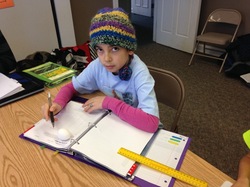 Next, students were properly prepared for their first project: Egg-speriment with a Cell, found in their notebooks. As a class we reviewed the lab requirements, set up a timeline for completion, recorded data and began the project. *Note - each student came home with a glass mason jar containing their egg soaking in vinegar. As I mentioned before, this project will require just a little parent involvement. Students should be measuring their egg daily and changing the liquid. Unforgettable Cells!
HomeworkMandatory:
Project: Egg-speriment: Follow class instructions and timeline. Record measurements each day and change your liquid as directed. Read Section 1.3 Chemical Compounds in Cells Study Guide: Chemical Compounds in Cells Compounds in Foods (pg. 30 of text) Optional: Online Activity pg. 26 of Textbook Enrichment: Modeling Cell Structures (found in your notebook enrichment section) Welcome to Class! Greetings fair ladies and gentlemen! So good to see you all at long last! We began with a brief overview of the structure and content of the class. What exactly will we be doing over the next 14 weeks? Students will be engaged in learning across three integrated areas:
The Feudal LifeStudents learned that feudalism became the primary structure of society during the Middle Ages. It was a system that tended to give power to a few in command and limited those beneath them severely.  Feudal Pyramid of Power Feudal Pyramid of Power A basic pyramid type structure illustrates the king at the top, with nobles/lords, knights, and peasants/serfs beneath. We discussed the term vassal (a person in a subservient position to another, granted land or the use of land in return for loyalty and protection) and fief (an estate of land, given on condition of feudal service and loyalty). To illustrate the realities of life in feudal society, we played a simple game. Students were randomly assigned role cards (king, noble, knight, or peasant) and 10 candies each (representing crops from their harvest). We then imagined a typical scenario where each vassal would be required to give a certain portion of their crops to the individual above them - peasant to knight, knight to noble, and noble to king. The distribution of candies at the end of the simulation helped illustrate the inequities of the feudal system. Barbary the Mudslinger Peasant girl Peasant girl We read our first monologue together from Good Masters! Sweet Ladies! (Barbary the Mudslinger) and discussed the theme of the piece (adversity and regret). Students worked in pairs to answer questions about the author's use of language to convey the theme. We did not have time to fully discuss, so please continue to think about these questions at home - and re-read the monologue. Does this seem like a character you'd like to perform? Students should keep in mind that although Good Master! Sweet Ladies! is not a lengthy book, the material it contains is very rich. This is not a book that is meant to be read quickly and put down, but rather read and re-read for deeper meaning and nuance. We will be spending time searching for the themes of each monologue, understanding the authors use of figurative language, and discovering for ourselves the emotion underlying each character - all of which will be necessary to truly bring these medieval personalities alive in our dramatic performances. HomeworkTo prepare for class next week, students should:
with Angela Harris The Call is Answered  Our final class on The Call of the Wild ended with a brief discussion of Rudyard Kipling's The Cat that Walked by Himself, our customary three-minute free-write, and a 'round-the-virtual classroom sharing of our quiz answers. I think everyone did pretty well, but it definitely proved a little tricker than I had planned. Check with your students to learn their scores if you are keeping track this year. Reviewing the answers gave us a great opportunity to discuss things we did not understand fully the first time around. That really should be the goal of testing, in my view! Darwinism, Nietzsche, and Jack London Charles Darwin, English Naturalist Charles Darwin, English Naturalist To wrap up our study of Jack London we learned about two of his influences: Charles Darwin, the English naturalist, and Friedrich Nietzsche, the German philosopher. London read voraciously and took with him to the Klondike Darwin's On the Origin of Species, although Darwin's greatest influence on London was really through the writer, Herbert Spencer. It was Spencer that coined the phrase "the survival of the fittest" (even though those words do appear in Darwin's work), and it was this theory that most appealed to Jack London, as he incorporated it into many of his short stories and novels. We also learned that London ascribed to Social Darwinism and was a racialist. He thought that certain favored races were destined for survival, particularly the Anglo-Saxon and Teutonic races. London was also heavily influenced by Nietzsche's writings, in particular, Thus Spoke Zarathusa. Nietzsche advocated the idea of the individual to the point of describing a "superman" or beyond-man" that was perfect in every way (mind, body, strength, intelligence) and not encumbered by religious teachings or social considerations. London would later write an indictment against this philosophy through his novels, The Sea Wolf and Martin Eden, but also embrace it to some extent through his work, Burning Daylight. London felt that individualism would fail without cooperation (or in his view, socialism). Having a basic idea of an author's philosophies can give the reader a much deeper appreciation of the works that writer is creating. This is by no means an exhaustive profile on London's philosophies, but a little window into the ideas that shaped his thinking. Thesis with TensionIn preparation for our next session, which will cover the Expository Essay exclusively, we revisited the concept of creating thesis statements, but this time we learned how to create a thesis with tension. After giving a couple of examples and sentence starters, the students were then read a list of interesting topics and tasked to pick four. Their assignment at the end of class was to simply develop four questions around their topics (one for each topic). It could be a question that they have, or that they think someone else might have about the topic. We'll pick up this exercise at the beginning of the next session on Wednesday, February 25, so please make sure you have those four questions written and available for our next class. Also, all final projects are due by February 25. See you then! Next book: My Antonia by Willa Cather I'm really excited about our next novel--another American masterpiece that will cover topics such as westward expansion, immigration, and the role of women in pioneer America. Can't wait! Please view the synopsis video and make sure to secure a copy of the book before the 25th. It's available for free on-line or through any of your e-reader apps. Let me know if you have any questions!  Due to yet another cycle of wintry mix forecast for our area, all classes are cancelled for Monday, 2/9. Please note the revised spring semester schedule: Feb 16 - Jun 1 (No class 4/6 & 5/25) with Angela Harris Gary Paulsen and The Iditarod 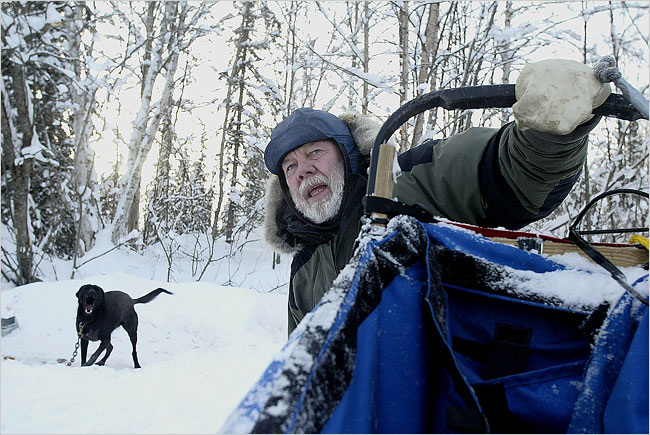 Author Gary Paulsen Author Gary Paulsen This week's lesson was all about American author, Gary Paulsen, the Iditarod dog sled race, and a wonderful prose poem by Paulsen called "Dogteam." First, we started with our weekly three-minute journal question/free-write. The topic was "cold." Students were asked to describe a time they were so cold, it hurt. Could they feel the cold air tingling in their lungs? Did their hands hurt from the cold? Were their fingers stiff? Did their nose sting from the wind? They were to be as descriptive as possible in preparation for a later exercise! Back to Gary... After a quick history lesson on the Iditarod, we met Gary Paulsen (author of Hatchet and Brian's Winter) who is considered by many to be a modern day Jack London. London inspired much of Paulsen's work, and in reading through his bio, we soon found out why. Although he was never a dedicated student, Paulsen developed a passion for reading at an early age. After a librarian gave him a book to read — along with his own library card — he was hooked. He began spending hours alone in the basement of his apartment building, reading one book after another. Running away from home at the age of 14 and traveling with a carnival, Paulsen acquired a taste for adventure. A youthful summer of rigorous chores on a farm; jobs as an engineer, construction worker, ranch hand, truck driver, and sailor; and two rounds of the 1,180-mile Alaskan dog sled race, the Iditarod; have provided ample material from which he creates his powerful stories. Living in the remote Minnesota woods, Paulsen eventually turned to the sport of dog racing, and entered the 1983 Iditarod. In 1985, after running the Iditarod for the second time, he suffered an attack of angina and was forced to give up his dogs. "I started to focus on writing the same energies and efforts that I was using with dogs. So we're talking 18-, 19-, 20-hour days completely committed to work. Totally, viciously, obsessively committed to work, the way I'd run dogs....I still work that way, completely, all the time. I just work...I'm just this way...." Sound familiar? Yes, we agreed--a lot like Jack London. I then read "Dogteam" by Paulsen. The story is an account of the night runs that he used to make with the dogs that he was training. "Dogteam" is an example of prose poetry. This type of poetry is meant to be read aloud; has rhythms, rhyme, assonance (repetition of similar vowel sounds), and consonance (repetition of similar consonant sounds) present in many other forms of poetry; vivid imagery and emotional effect; there is a continuous sequence of sentences without line breaks. After discussing the meaning of some of the more descriptive, if not obscure, phrases, we learned about Sentence Fluency trait. Gary Paulsen gives us a chilling, powerful example of the Sentence Fluency trait. He alternates very quick and concise sentences and phrases with lengthier, very descriptive, almost rambling sentences. We are trained to recognize and create sentences that look correct, with capital letters, subjects, predicates, commas in all the right places. But the trait of Sentence Fluency teaches us that every sentence doesn’t need to “look correct” in order to fit. Prose Poems Using Sentence Fluency Trait  We then practiced writing our own prose poems using Sentence Fluency trait. Remember that free-write on "cold?" Using some of our free-write, or starting from scratch, we set out to create some prose poetry. I rolled two die four times to create four sentences. Whatever was rolled was the number of words each sentence could contain. We were hoping for a nice, random mix of long and short sentences, but the odds were a bit against us. Still--the students wrote some beautiful prose, and I'm happy to share it with you here. These are based on die roll of FOUR/SEVEN/FIVE/TWELVE. I want to add that they had to write these in about five minutes. Enjoy! My fingers are burning. The heat is spreading throughout my body. But it isn’t quite right. Something is different--wrong--because this feeling is not hot, but cold. -- A.R. My fingers were numb. My lips, cheeks, and nose were burning. My toes felt like icicles. Every step I took I felt myself growing more and more tired. -- K.I. Winter wind is alive. It lives within the very first snow. Forever unchanging, never the same the open forest waits for the wind, stretching to the watercolored sky. -- C.B. Rudyard Kipling
|
Categories
All
Archives
May 2016
|

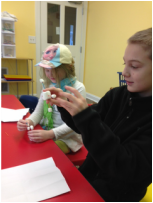













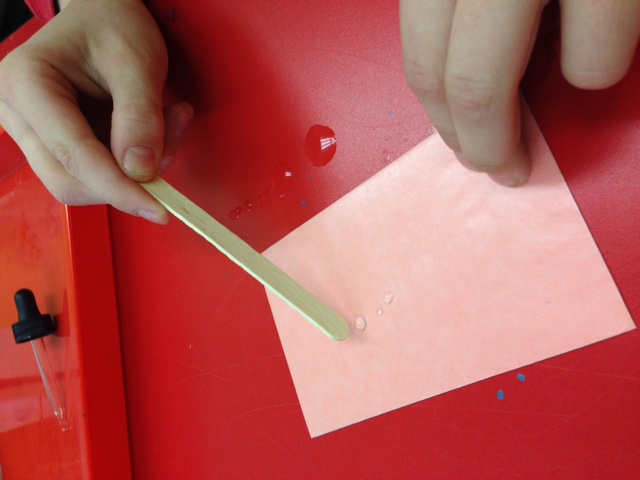



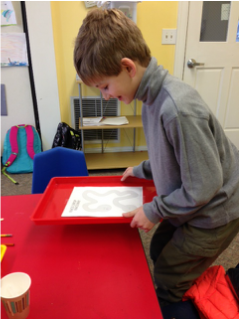

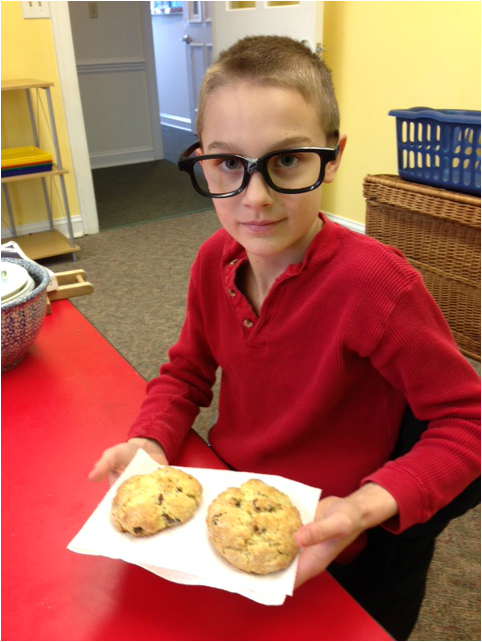




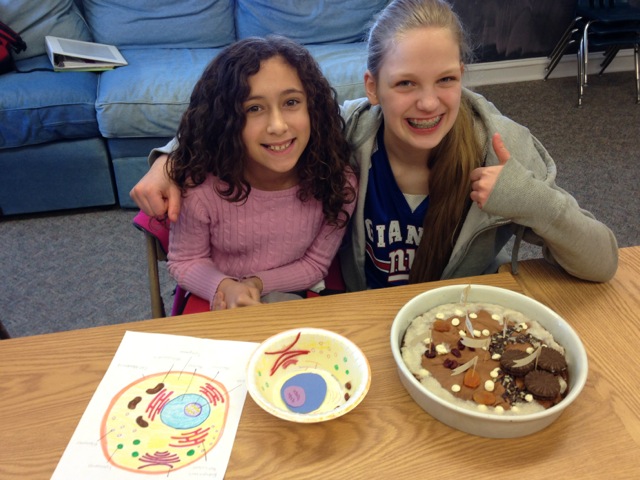








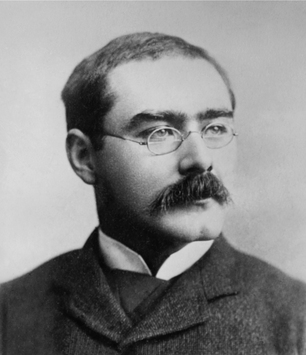

 RSS Feed
RSS Feed